Table of Contents
Welcome to the enchanting world of Persian breakfast, a delightful way to kickstart your day in Iran. I’ll take you on a gastronomic journey, exploring the diversity and opulence of Iranian breakfast. From the ever-present fresh flatbread to the cherished tradition of savoring Persian tea, we invite you to immerse yourself in Iran’s rich culinary heritage. So, sit back, unwind, and allow us to lead you through the delectable universe of Persian breakfast.
14 Persian Breakfast Ideas
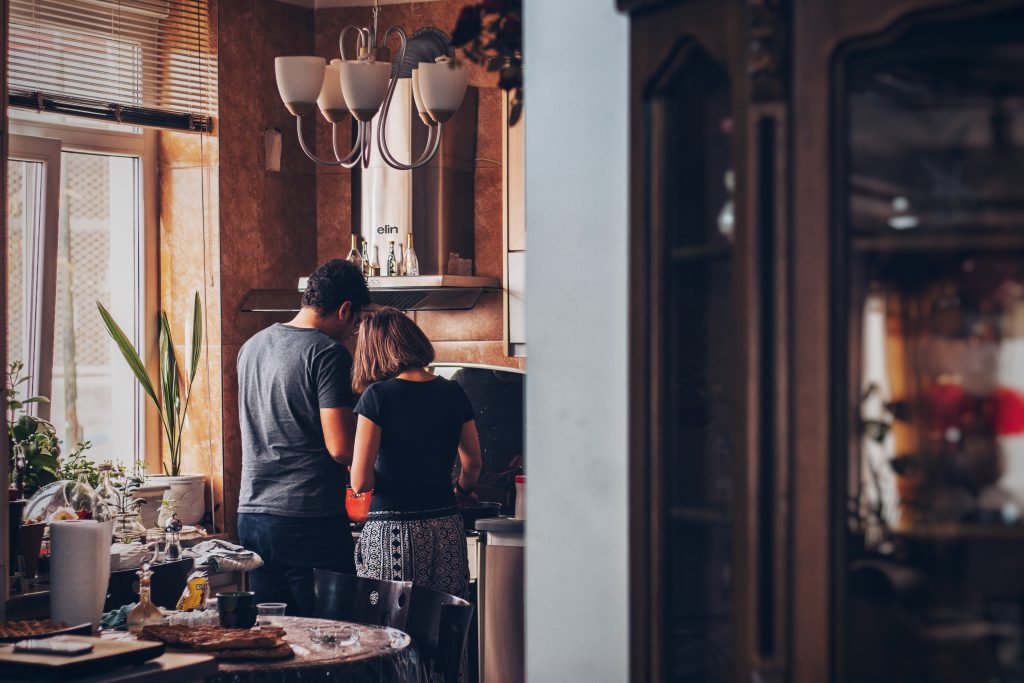
Iranian breakfast is a treasure trove of nutrients, and it is a cherished experience for families to spend quality time together over this meal. At the heart of an authentic breakfast in Iran lies the constant element of fresh flatbread. Iranians enjoy this bread in various combinations. Some of the popular combinations include:
1. Bread and Cheese with Walnuts and Dates: A classic breakfast combining bread, cheese, walnuts, and dates, offering a balanced and flavorful start to the day.
2. Bread and Cheese with Cucumber and Tomato: A refreshing and light option with bread, cheese, cucumber, tomato, and optional fresh herbs like parsley and basil for added freshness.
3. Bread with Honey and Breakfast Cream: A sweet and indulgent breakfast treat for a delightful morning experience.
4. Bread with Butter and Homemade Jam: A simple and comforting choice with bread spread with butter and homemade jam for a touch of sweetness.
In Iran, a variety of fruit jams, including carrot, strawberry, cherry, and more, are commonly enjoyed as a delicious accompaniment to bread during breakfast.
5. Bread with Tahini (Arde) or Halva Arde: A nutritious and flavorful option pairing bread with tahini or Halva Arde, a sweet sesame-based spread.
6. Fried Egg: A classic breakfast staple enjoyed in Persian cuisine as a protein-rich addition to the morning meal.
7. Boiled Egg: A simple and nutritious choice, providing a quick and easy source of protein, sprinkled with a pinch of salt and black pepper.
8. Tomato Omelette: A delicious and savory dish made with eggs and tomatoes, flavored with turmeric for a delightful omelet.
9. Date Omelette: A unique dish combining eggs and dates, creating a sweet and savory flavor fusion.
10. Khorak-e Loobia (Pinto Beans Stew): A hearty option, this stew is made with pinto beans, tomatoes, and spices, offering a filling and nutritious start to the day.
11. Haleem or Halim: A traditional Irani breakfast dish, Haleem or Halim is a thick and creamy porridge-like mixture made from wheat, meat, and lentils, often enjoyed during Ramadan and on special occasions.
12. Adasi (Lentil Stew): A nutritious and comforting stew made with lentils, herbs, and spices, providing a satisfying and flavorful morning meal.
13. Kale Pache: A traditional dish consisting of boiled sheep or cow’s head, feet, heart, brain, and eyes, often enjoyed as a rich and nourishing breakfast.
14. Fereni: A creamy and sweet Persian rice pudding made with ground rice, milk, and sugar, commonly enjoyed as a dessert or breakfast option.
Remember to complement your breakfast with a cup of tea! A vital part of Persian breakfast culture, tea enhances and complements the flavors of the morning meal.
The Role of Bread in Persian Breakfast
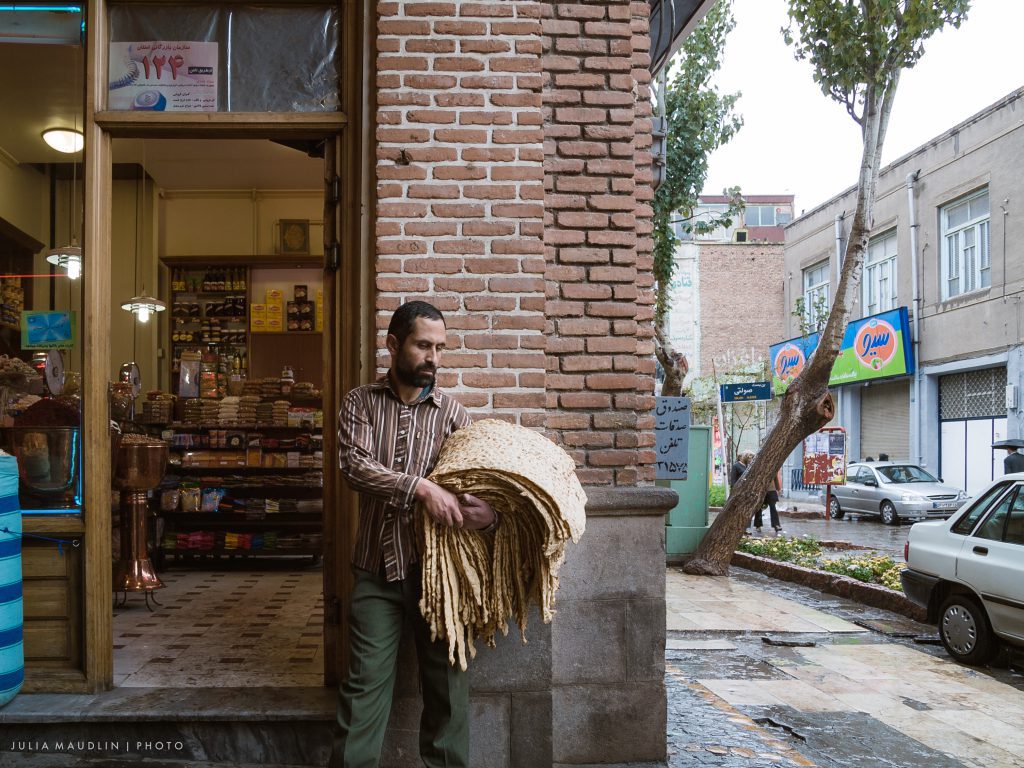
Bread plays a significant role in Persian breakfast, serving as a staple food and typically accompanied by various delights like cheese, butter, jam, honey, and fresh herbs. It is common to use bread as a utensil to scoop up other foods, such as stews and dips.
How is Persian Bread Different from Other Countries?
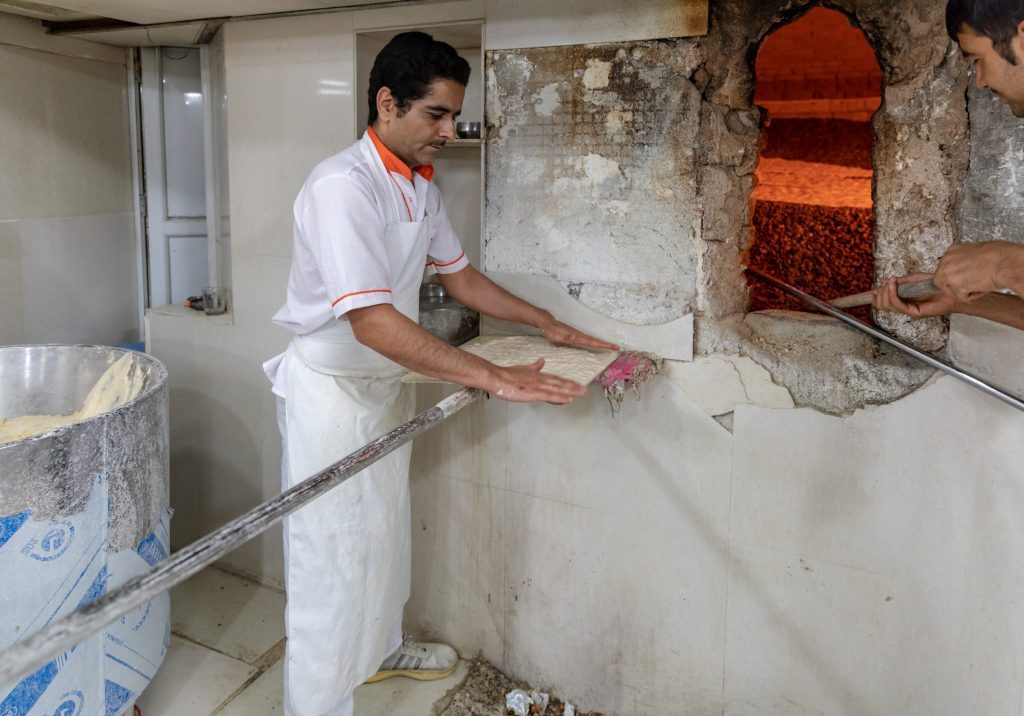
Persian bread boasts several unique characteristics that distinguish it from other types of bread. Firstly, it features a distinct texture and flavor, being thin, soft, and chewy, with a slightly crispy crust. The traditional method of baking bread involves using hot stones or a tandoor oven, which imparts an unparalleled taste and texture. Additionally, Iranian bread is typically unleavened or slightly leavened, resulting in flatter and denser bread compared to other varieties.
While Iranian bread shares some similarities with bread from neighboring countries in the Middle East and Central Asia, such as Lavash bread, each country maintains its own distinct variations and flavors in bread-making techniques.
Persian Bread: Sangak and Beyond
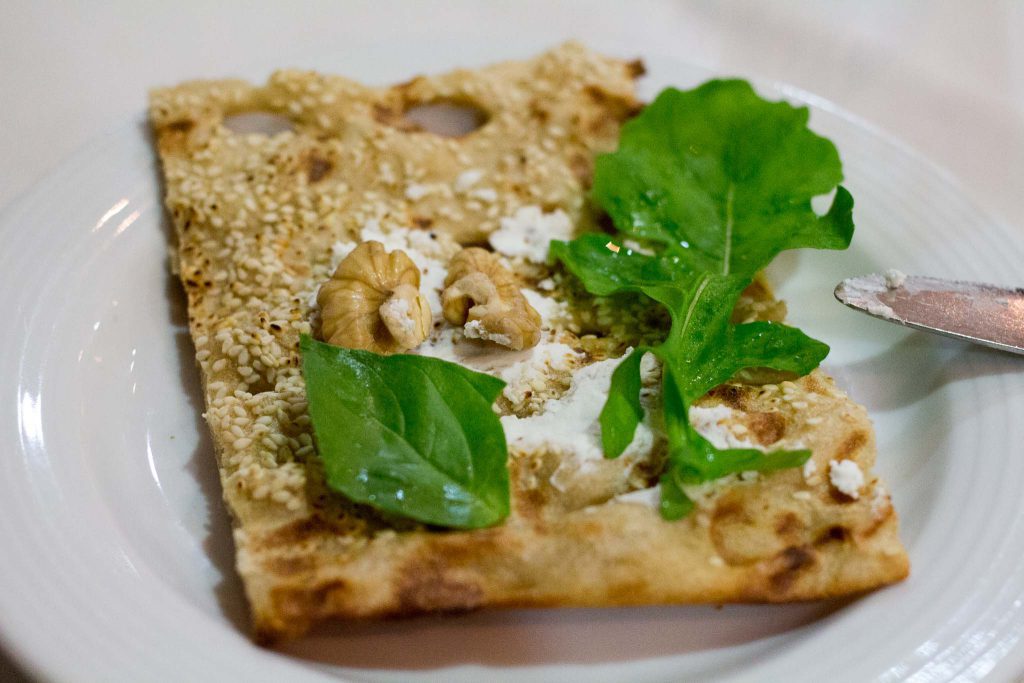
Among the array of Iranian bread, Sangak holds a special place in the hearts of Iranians.
Sangak is a flatbread crafted from whole wheat flour and baked on a bed of small stones or pebbles in a tandoor oven. The term “sangak” translates to “little stone” in Persian, alluding to the unique baking method.
Sangak is often served in restaurants alongside various kebabs, Kale Pache, Omlet, and other dishes. Finding a Sangak bakery is easy, as it can be found in both big cities and small towns.
In addition to the four common breads mentioned, every ethnic group and province in Iran has its own local bread varieties that perfectly complement local breakfasts and other meals. For instance, Komaj bread, found in Hamadan and Fars provinces, can be enjoyed alone as a delicious snack.
Haleem: A Traditional Persian Breakfast Dish
Persian Haleem, also known as Halim or Harees, is a traditional dish typically savored during the holy month of Ramadan as Iftari. Haleem is a thick and hearty porridge-like dish created from a blend of wheat, meat (often beef or lamb), and sometimes lentils, seasoned with various spices. The ingredients are slow-cooked together for hours until they break down, resulting in a smooth and creamy texture. Aside from its significance during Ramadan, this food is relished as a comforting and satisfying meal at other times of the year. It is often garnished with sugar, melted butter, and cinnamon, making for a rich and energizing breakfast.
How to Make Haleem in 14 Steps
To prepare traditional Iranian Halim at home, you will need the following ingredients:
– 500 grams of peeled wheat
– 250 grams of turkey or lamb meat
– 1 onion
– Water as needed
– Salt as needed
– Oil or melted butter as needed
– Sugar, cinnamon, and sesame seeds for garnishing
Now, let’s proceed with making a delicious bowl of food at home!
1. Soak the peeled wheat with water for about 12 hours.
2. After 12 hours, drain the water and place the wheat in a pot with 18 glasses of water.
3. While boiling the wheat and water, foams will form. Remove the foams with a spoon to prevent the Halim from turning black.
4. After the water boils, reduce the heat and cover the pot, allowing the wheat to cook thoroughly.
5. Meanwhile, coarsely chop an onion.
6. In a separate pot, cook the meat with the chopped onions and 3 glasses of water. Initially, bring it to a boil, then reduce the heat and let it cook.
7. It may take at least three hours to cook the meat. When it’s half cooked, you can add some salt to enhance the flavor.
8. While the wheat is cooking, stir it occasionally to prevent sticking. After 4 hours, remove the wheat from the heat.
9. Once the wheat has cooled slightly, mash it well using an electric beater or a mixer until it becomes a smooth puree. Alternatively, you can stir it vigorously until smooth.
10.Shred the pre-cooked meat using a fork and knife, and set it aside.
11. Strain the remaining water from the meat and keep it.
12. Add the shredded meat to the wheat, along with the reserved broth.
13. Beat the mixture in the pot for another 15 minutes using an electric mixer until everything is well combined. Avoid using a meat grinder, mixer, or food processor to crush the ingredients.
14. Season with salt and let the Halim simmer on low heat for half an hour. When it reaches a desirable consistency and becomes stretchy, remove it from the heat and transfer it to your preferred container. Drizzle melted butter on top and garnish with cinnamon, sugar, and sesame seeds.
Of course, you can adjust the seasoning and consistency to suit your taste preferences. Enjoy your flavorful and nourishing Haleem alongside a cup of black tea!
Best Places to Eat Halim in Tehran
In Tehran, you can find several restaurants that serve Ash and Halim, providing a taste of authentic Persian breakfast. Here are some of the best places to try Persian Halim:
1. Darchinِ
– Address: No. 155, Sattarkhan, Corner of Afrand Alley
Note: At certain times of the day, there might be a short wait, but the food is usually readily available. If traveling by car, plan ahead for parking, as the restaurant is situated on a street filled with cafes and restaurants.
2. Seyyed Mehdi
– Address: No. 16, Shahid Andarzgoo Blvd. South Shahid Vatanpur St., Farmanieh Neighborhood
This restaurant is renowned for its long history. Alongside various Ashes and Halim, you can also order desserts like Masghati, Samanu, Sholleh Zard, and Halwa. Other branches of Halim Seyed Mehdi are located in Tajrish Square, Majidieh, and Sadeghieh.
3. Majid
– Address: No. 237, Pasdaran St., south side of Ekhtiyarieh Square
Majid’s Haleem is available every day from 6 to 9 am on normal days, and during Ramadan, it is recommended to arrive at least two or three hours before dawn (Sahar)!
4. Nikou Sefat
– Address: No. 170, Enghelab Square, South Jamalzadeh St.
Located downtown, this restaurant is famous for its Halim, Adasi, Ash-e Doogh, and Ash-e Sholleh.
These establishments offer a delectable and authentic Persian Halim experience, allowing you to relish this traditional breakfast dish in the heart of Tehran.
Please note that while I’ve provided these restaurant names and addresses based on available information, it’s always a good idea to check for updated information and reviews before planning your visit.
Kale Pache – A Traditional Iranian Breakfast Dish
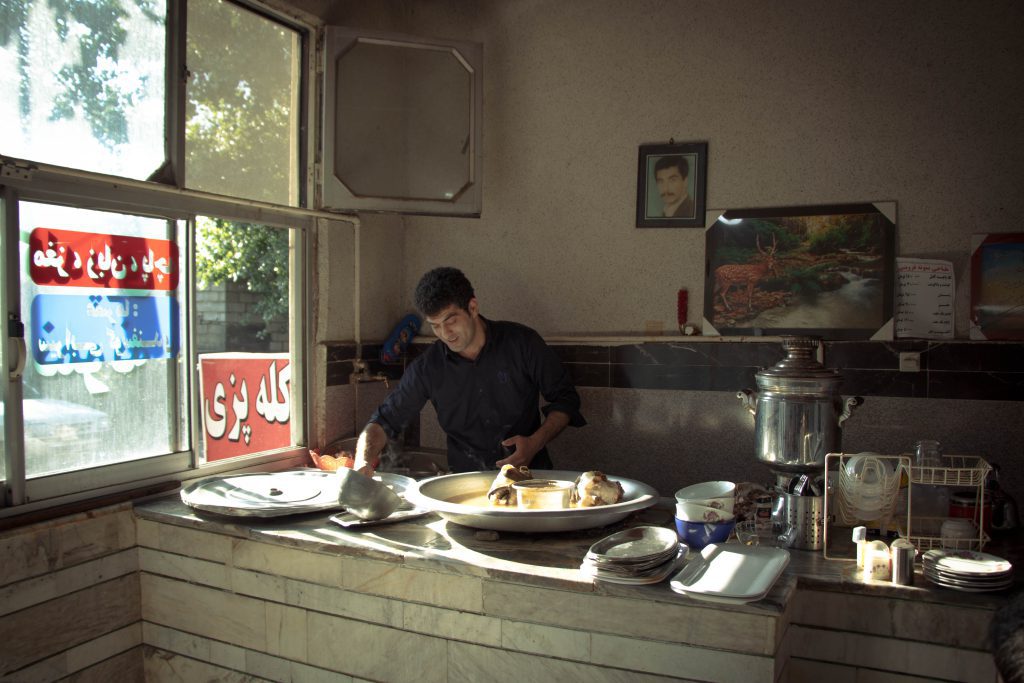
Kale Pache, also known as Kaleh Pacheh, is a traditional Iranian breakfast dish that consists of boiled sheep or cow’s head and feet. It is a popular morning meal in Iran and is typically consumed early in the day.
A Brief History of Kale Pache
The history of this food dates back centuries and is deeply rooted in Iranian culture. It is believed to have originated from the nomadic tribes of Iran, where every part of the animal was utilized to ensure nothing went to waste. The dish was initially prepared as a hearty meal to provide sustenance and energy to the nomads during their travels.
Over time, Kale Pache became a beloved breakfast dish in Iran, especially during the colder months. It is considered a nourishing and warming meal, perfect for starting the day. The dish is prepared by simmering the sheep or cow’s head and feet in a flavorful broth with various herbs and spices. The resulting broth is rich and gelatinous, and the meat is tender and flavorful.
Which Parts of Kale Pache Can Be Eaten?
Kaleh Pacheh is rich in protein and cholesterol, particularly in the brain part, which contains as much cholesterol as 8 egg yolks. Kaleh Pacheh has different parts, with the tastiest being the leg and tongue, which contain less fat than other parts. The best Kale Pache is cooked by the most reliable and experienced cooks in Tehran’s Kale Pazis (Tabaakhi). Generally, the edible parts of Kale Pache include the brain, eyes, ears, tongue, meat, legs, and face.
Best Time to Eat Kale Pache
While Kale Pache is commonly eaten for breakfast, it can also be found in specialty restaurants that serve it throughout the day. It is particularly popular on weekends when people have more time to savor the dish and enjoy a leisurely meal. Due to the high fat and cholesterol content of the eye and brain parts, it is usually not recommended to eat them often. It is better to consume Kaleh Pacheh two to three times a month and not more.
Best Places to Eat Kale Pache in Tehran
Here are some of the best places to enjoy a delicious Kale Pache breakfast in Tehran:
1. Kaaj
Address: They have 4 branches in Tehran:
- – Daadman Branch*: Shahrak-e Gharb, Dadman Boulevard, before reaching Yadgar Imam bridge
- – Pasdaran Branch: Pasdaran St., before Sefid Tower, corner of Dashtestan 8th
- – Saadat Abad Branch: Kaj Square, towards Sanat Square, after Niayesh Bridge
- – Resalat Branch: Resalat Highway, east-west, after Donyaye Noor
2. Barre Sefid
– Address: Towheed Square, Sattar Khan St., in front of Baqer Khan St
– Phone number: 021-66504012, 021-66503162
3. Neshaat
– Address: Yusuf Abad, Fathi Shaghaghi St., corner of Jahan Mehr St.
– Phone number: 021-88014868
4. Dorehami
– Address: Saadat Abad between Sarv Crossroads and Ketab Square in front of Ayandeh Bank
– Phone number: 021-22136320
These restaurants offer an authentic and satisfying Kale Pache experience, allowing you to taste the traditional flavors of Iran.
The Tradition of Drinking Persian Tea
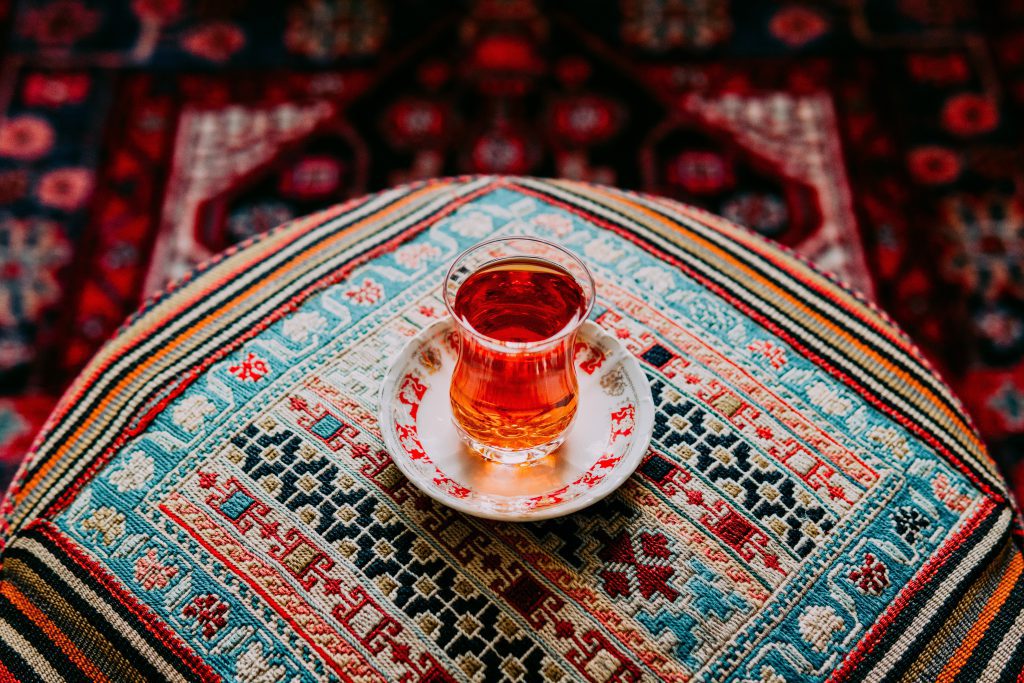
The tradition of tea drinking in Iran has a long and illustrious history, tracing back to the 16th century. Tea was introduced to Iran through trade routes with China and swiftly became a beloved beverage among the Iranian populace. Today, tea holds profound cultural significance and plays a vital role in everyday life.
A Brief History of Persian Tea
The history of tea in Iran dates back to the Safavid dynasty in the 16th century. It is believed that Persian merchants brought the first tea seeds from China to Iran. Initially, tea was reserved for the royal court and the elite, but it gradually gained popularity among the general public and became a staple drink in Iranian households.
Tea cultivation in Iran began in the 19th century, particularly in the northern regions where the climate and soil conditions were conducive to tea production. Presently, Iran is one of the world’s leading tea producers, with tea plantations located in provinces such as Gilan, Mazandaran, and Golestan.
Iranian Tea in Daily Life
Tea holds immense significance in a typical Persian day. It is customary for Iranians to start their day with a cup of tea, often accompanied by a simple breakfast of bread, cheese, and other condiments. Tea continues to be served throughout the day, during social gatherings, and after meals. It is a symbol of hospitality, and Iranians offer tea to guests as a gesture of warmth and welcome.
In Iranian culture, tea goes beyond being just a beverage; it is a social ritual. Friends and family gather and engage in conversation while sipping tea. The preparation and serving of tea are carried out with great care and attention to detail.
How Persian Tea is Made
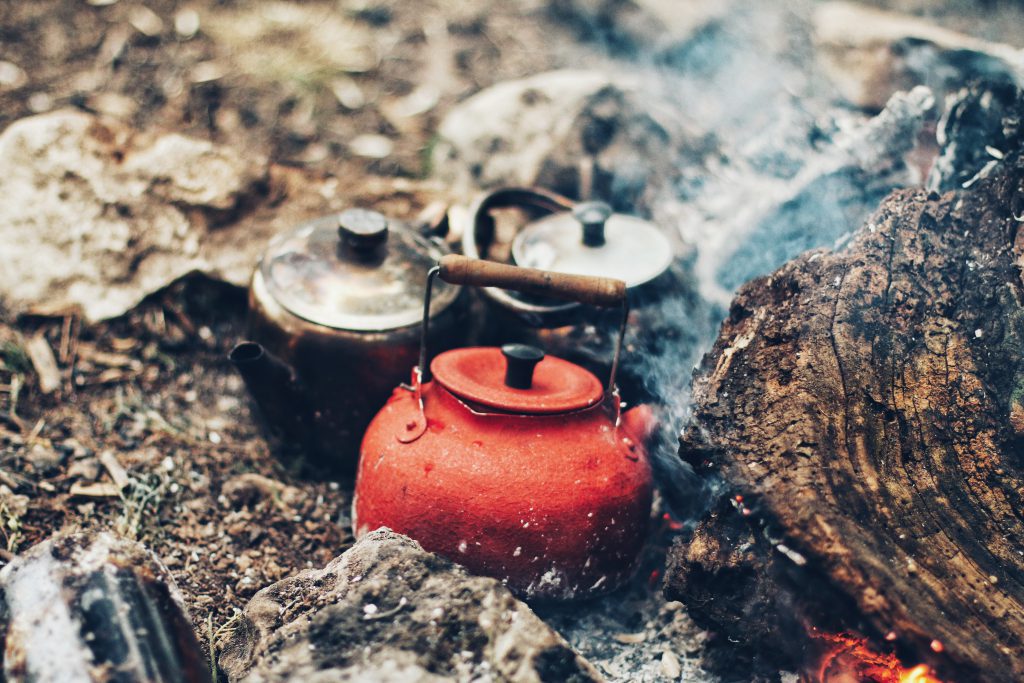
Traditional Persian tea is typically brewed using a samovar, a metal container with a central chamber for boiling water, and a surrounding compartment to keep the tea warm. The tea is served in small glasses known as “Estekans” and is often accompanied by sugar cubes for sweetening.
The significance of tea in Iranian life goes beyond its taste and aroma. It serves as a means of connection, fostering social bonds and facilitating conversations. It is a symbol of hospitality, friendship, and warmth. Whether enjoyed in the comfort of one’s home or in a bustling tea house, tea holds a special place in Iranian culture and remains an integral part of daily life.
Best Places to Have Persian Breakfast in Tehran
Tehran boasts numerous eateries where you can relish a delicious Persian breakfast. Here are some of the best places to explore:
1. Dizi and Breakfast at Serai Valiasr: A famous spot to enjoy a traditional, affordable, and tasty breakfast.
– Address: Valiasr St., between Motahari and Beheshti St., on the corner of Del Aviz Alley
2. Baradaran Kitchen: A small, cozy, and economical restaurant offering breakfast from 7:00 am to 1:00 pm.
– Address: North side of Sheikh Bahai Square, towards Vanak St., the beginning of South Seoul, corner of Nastern Alley, No. 9
3. Rubai Cafe: An economical cafe with a love for nature and clean air.
– Address: No. 33, 18th St., Asadabadi St., Yusefabad
4. Nayeb Restaurant Breakfast Buffet: A famous and old restaurant with several branches in Tehran.
– Nayeb Sa’i: Valiasr St., below Sa’i Park, No. 1030
– Nayeb Vozara: Abbas Abad, Vozara St., Alley 11
– Nayeb Aban: Karimkhan St., the end of South Aban, number 5
– Nayeb Sohravardi: North Sohrevardi, above Khoramshahr crossroad, No. 649
– Nayeb Jordan: Africa Street, Gulfam Street, Amir Passage, Unit 10
– Nayeb Saadat Abad: Saadat Abad, Kaj Square, Silk Commercial Center, Unit 3
– Nayeb Zafaranieh: Valiasr, before Tajrish Square, Pesian Station, No. 1719
These restaurants offer a wide variety of breakfast options and allow you to savor an authentic Persian breakfast experience in Tehran.
In conclusion, Persian breakfast offers a delightful start to the day with its diverse and flavorful dishes, derived from the wide range of Persian foods. From the comforting Haleem to the nourishing Kale Pache, and the rich traditions of drinking Persian tea, the Iranian breakfast experience is one that shouldn’t be missed. So, if you find yourself in Tehran or any other Iranian city, make sure to indulge in the local breakfast culture to enjoy a truly memorable culinary journey. Bon appétit!
FAQs about Persian Breakfast
Q1: What makes Persian breakfast unique?
A1: Persian breakfast is unique due to its diverse array of dishes and the incorporation of traditional elements like fresh flatbread and Persian tea. The combination of sweet and savory options, such as bread with honey and breakfast cream or date omelet, sets it apart from other breakfast traditions.
Q2: Is Persian breakfast suitable for vegetarians?
A2: Yes, Persian breakfast offers plenty of vegetarian options. Dishes like bread and cheese with cucumber and tomato, date omelet, and lentil stew (Adasi) are excellent choices for vegetarians seeking a flavorful morning meal.
Q3: What is the significance of Persian tea?
A3: Persian tea holds great cultural importance in Iranian society. It is not just a beverage but a symbol of hospitality and togetherness. Serving and enjoying tea during breakfast fosters a sense of connection and warmth among family and friends.
Q4: Can I find Persian breakfast outside of Iran?
A4: While Persian breakfast is a traditional Iranian culinary experience, it is becoming more popular worldwide. In cities with significant Iranian communities, you may find restaurants and cafes that offer Persian breakfast options.
Q5: How is Persian bread different from other types of bread?
A5: Persian bread is unique in texture and flavor. It is typically thin, soft, and chewy, with a slightly crispy crust.
Q6: What are the health benefits of Persian breakfast dishes?
A6: Persian breakfast dishes are often rich in nutrients, providing a well-balanced start to the day. Dishes like Khorak-e Loobia (Pinto beans stew) and Haleem (a thick porridge-like dish) offer essential proteins and fibers, while fruit jams and fresh vegetables contribute to a healthy morning meal.
Q7: Are there regional variations in Persian breakfast dishes?
A7: Yes, like many traditional cuisines, Persian breakfast varies across different regions of Iran. Local ingredients and culinary traditions influence the dishes served during breakfast. For example, Komaj bread is a regional delicacy found in Hamadan and Fars provinces.
Q8: Can I prepare a Persian breakfast at home?
A8: Absolutely! Many Persian breakfast dishes can be prepared at home with readily available ingredients. You can try making bread and cheese combinations, date omelet, lentil stew, or even the famous Haleem following traditional recipes.
Q9: Is Haleem only consumed during Ramadan?
A9: While Haleem is a traditional dish often associated with Ramadan and special occasions, it can be enjoyed throughout the year.
Q10: Is Persian breakfast gluten-free?
A10: Persian breakfast primarily includes bread made from wheat flour, which contains gluten. However, some dishes like fruit jams, tomato omelets, and vegetable-based stews may be gluten-free. If you have dietary restrictions, it’s essential to check the ingredients and choose dishes accordingly.
Embark on a Culinary Adventure with ToIranTour
Experience the authentic taste of Iran with ToIranTour, your trusted travel companion. Our tailor-made tours are designed to immerse you in the rich Iranian culture, starting with a delightful Persian breakfast. Imagine starting your day with the aroma of freshly baked Iranian bread, the sweetness of homemade jams, and the warmth of Persian tea. With ToIranTour, you don’t just visit Iran, you taste it, you live it. So why wait? Embark on a culinary adventure with us and make your travel experience unforgettable.


Well done… useful info for me who knows nothing about persian food 😀